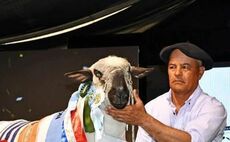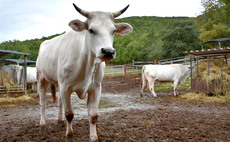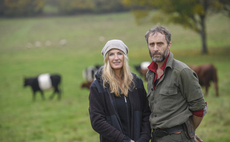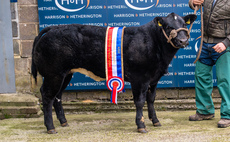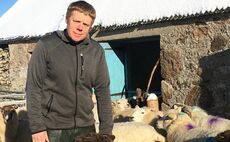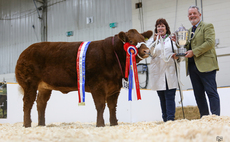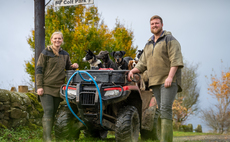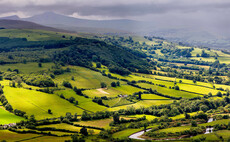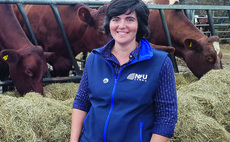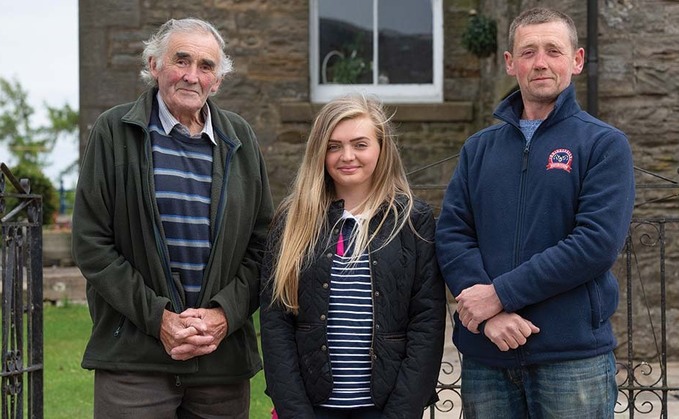
Six generations of the Dent family have farmed at Naby View, Lartington, and during the whole of that time Swaledale sheep have been at the heart of the enterprise. Angela Calvert reports.
THE business is now run by Keith Dent and his wife, Vera, his brother, Robert, and their sons, Clive, Graham and Stuart, with grandchildren, Matthew and Caitlin, who has started her own Swaledale flock, also involved.
They run 1,900 ewes, comprising 700 Swaledales which are kept pure, 800 Swaledales put to a Bluefaced Leicester ram, 300 Mules and cross-bred ewes along with 40 pure Texels. There are also 280 Limousin-cross and British Blue-cross suckler cows.
The family farm across three holdings totalls 486 hectares (1,200 acres) of grass, which is a mix of owned and rented land and has the rights to run 170 sheep on Cotherstone Moor.
This year the Swaledale Sheep Breeders' Association (SSBA) is celebrating its 100th anniversary and the Dent family has been involved for most of that time. Keith's great-grandfather, William, was on the very first committee and the first meetings of the society were held at Tan Hill which is where County Durham, Westmorland and North Yorkshire meet.
Clive says: "We have always had Swaledales and they suit us and the farm. They are easy care, lambing without problems, are able to rear two lambs and rarely have problems with mastitis.
"We check them once a day and then two or three times a day during lambing. Even when selling tups they do not take a lot of preparation."
About 30 Swaledale rams are sold each year at SSBA sales and last year saw the family achieved their best ever price when, after taking the championship at Kirkby Stephen, a shearling ram sold for £35,000. This was followed by another making £30,000 at Hawes. Both were from the first crop of a Richard Harker ram, bought for £5,000.
Clive says: "Selling tups is really more of a hobby. It is great when they do make big prices, but it is not something you can rely on.
"Our main aim is to breed good ewes which last. I am aiming for a medium-sized ewe with a good carcase, hard hair and a good mouth with broad teeth.
"We do not sell any draft ewes and we expect them to have three crops to the Swaledale and then three or four crops to the Bluefaced Leicester."
The best Swaledale ewes are kept pure and lamb outside from April 1, with the remainder of the ewes lambing in March.
Four or five Swaledale rams are bought-in each year and sometimes shared with other breeders.
Clive says: "When I am buying tups, as well as how they look, I like to study bloodlines and choose lines which have shown they have gone on to do well for new owners.
"Sometimes rather than sharing it is just better to buy your own tup then you can put it with more of your own ewes."
About 50 Mule gimmer lambs are kept each year as replacements, the remaining 600 or so are sold at Barnard Castle market and they averaged £95 last year. Surplus Swaledale gimmer lambs are sold at Middleton in Teesdale.
Clive says: "Like the tups, the Mule and Swaledale gimmer lambs do not take much getting ready and they are all sold on one day which makes it easier.
"I am worried about sales later in the year though. I do not want to have to ‘drop and go' as particularly when selling tups you need to be able to entice the buyers by talking to them, so I am hoping lockdown restrictions will have eased by then."
Mule and cross-bred ewes are put to Beltex and Texel rams with lambs sold through Barnard Castle market through the summer.
The Mule wether lambs go to Dunbia at 18-22kg deadweight from September to January, with the Swaledale tup lambs also going deadweight to Dunbia from November.
Clive believes the Swaledale breed has changed over the years, with ewes much more prolific and two types of rams emerging.
He says: "Probably because they are not having to work as hard with less ewes kept on the fells due to shooting and environmental schemes, most ewes will rear two lambs nowadays, although I do think that single lambs grow better if they are on the moor.
"Tups generally are bigger than they used to be and tups for the pedigree market now have a lot more colour on their face and legs, whereas commercial tups are bigger, darker with more wool."
The suckler herd is mainly Limousin and British Blue cross cows which are put to Limousin and British Blue bulls but includes 30 pedigree Limousin cows, whose offspring is sold privately and sometimes at Carlisle.
The herd is spring calving with calves then sold at six to 10 months old at the February and May sales at Barnard Castle market, apart from heifers kept as replacements. A number of calves from the herd have gone on to do extremely well in the show ring for their new owners.
Clive says: "We try to breed as muscular calves as possible to sell at a premium price as show calves."
Last year calves sold to £3,000, £2,900 and £2,800, with the 60 sold at the February sale averaging £1,100
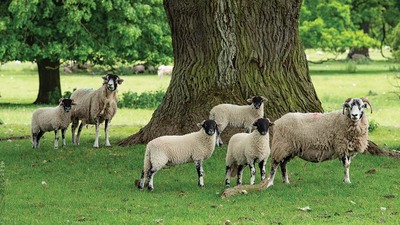
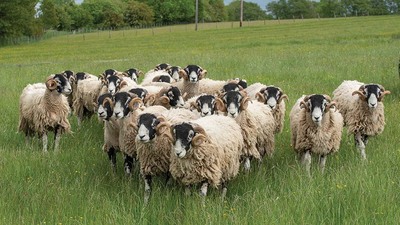
Farm Facts
- 486 hectares (1,200 acres) all grass
- 32ha (80 acres) of pit silage and 162ha (400 acres) of hay and big bale silage made
- 700 Swaledale ewes which are kept pure and lamb outside from April 1
- 800 Swaledale ewes put to Bluefaced Leicester rams which lamb from March 20
- 300 Mule and cross-bred ewes which lamb from March 1
- 40 pure Texels with home-bred Texel rams sold privately and at Barnard Castle
- 260 Limousin and British Blue cross suckler cows
Swaledale Sheep Breeders Association centenary

John Stevenson
The Swaledale Sheep Breeders Association was founded 100 years ago and while a large percentage of Swaledale sheep are in the North of England, the breed can now be found in all areas on the UK and is becoming increasingly popular in Northern Ireland and the Republic of Ireland.
The centenary of the association was to have been celebrated with a ‘one-off' show and exhibition at J36 Livestock Centre on June 7 which has now been cancelled. A dinner to be held at Shap Wells has been postponed until early November.
The centenary year coincides with the retirement of secretary John Stephenson, whose family have been involved with the association from the very beginning and who has worked for it for 21 years.
Rachel Buckle, who has been assisting Mr Stephenson for the past year, will take over as secretary on his retirement. Ms Buckle's family have been involved with the association since its formation in 1920 when her great-grandfather William Allison was on the B District committee.






